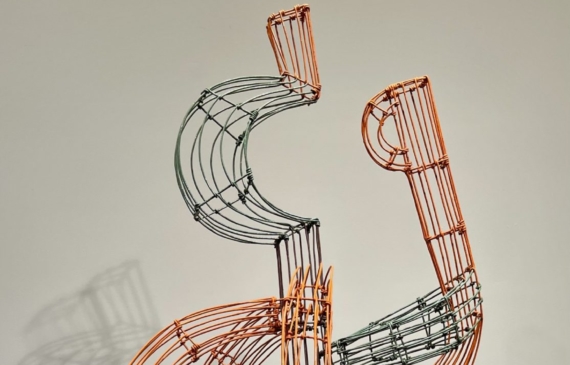



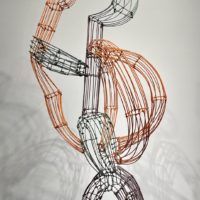




Hayward Oubre (American, 1916-2006)
Hitch Hiked, 1960
Painted wire sculpture
45 H. x 21 W. x 19 D. inches
Signed on base: OUBRE 60
Provenance:
Estate of the artist



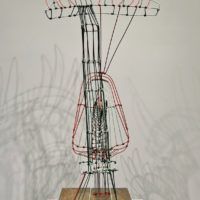








Hayward Oubre (American, 1916-2006)
The Trap, c. 1960
Painted wire sculpture
40 H. x 16 ½ W. x 21 D. inches
Provenance:
Estate of the artist



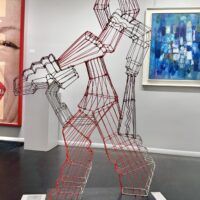

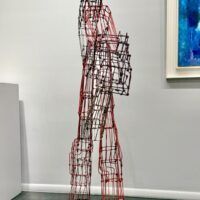
Hayward Oubre (American, 1916-2006)
Untitled (Striding Man), circa 1960
Painted wire on wood base
53 ¼ H. x 34 ½ W. x 12 ¼ D. inches
Base: 26 ¾ x 12 x 2 inches
Provenance:
Estate of the artist
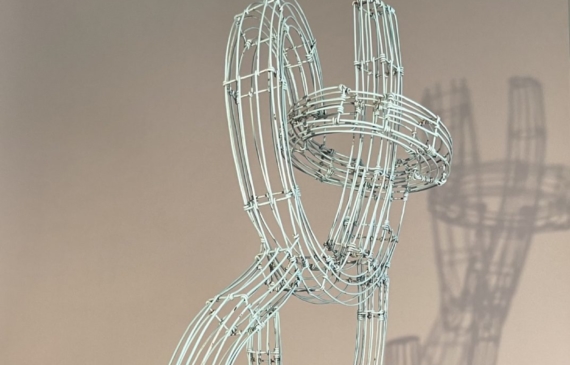

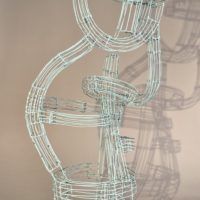






Hayward Oubre (American, 1916-2006)
Sight of Music, 1960
Painted wire sculpture
40 ½ H. x 20 W. x 17 ¾ D. inches
Signed upper right corner wood base: OUBRE 60
Provenance:
Estate of the artist
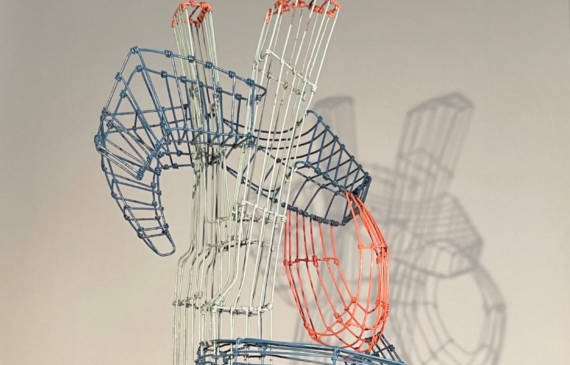
Hayward Oubre (American, 1916-2006)
Entanglement, 1963
Wire, paint
41 ¼ H. x 21 W. x 18 ½ D. inches
Mounted to original painted wood base:
2 ½ H. x 19 ¼ W. x 14 ⅞ D. inches
Signed top of base: OUBRE
Signed side of base: OUBRE ‘63
Provenance:
Estate of the artist
Oubre was born in 1916 in New Orleans and later attended Dillard University, graduating as the University’s first art major in 1939. He continued his studies at Atlanta University with Harlem Renaissance painter Hale Woodruff and sculptor Nancy Elizabeth Prophet as his mentors. In 1941, he was drafted into military service.
After the War, he used the G.I. Bill to enroll at the University of Iowa, where he earned an M.F.A., the third such degree bestowed upon an African American, following Elizabeth Catlett and Houston E. Chandler. In addition to sculpture, he painted and made etchings, many depicting African-American life inspired by his New Orleans boyhood.
After graduation, he commenced his teaching career at Florida A & M University, followed by Alabama State College and finally Winston-Salem State University in North Carolina, retiring in 1981. During this time, he developed a concise study of color mixing and color relationships that he published and distributed to his students.
Oubre began to explore sculpture in the 1950s, experimenting with a little-used medium – wire. He was certainly aware of Alexander Calder’s wire sculptures and mobiles, but he went beyond the two-dimensions of Calder’s early mobile work, describing his own work as moving into a third dimension that he called “equivocal space.” As he described it, “You can see through and see the volume and bulk at the same time. It’s nothing but wire. It’s not welded or soldered. I only use pliers to bend and twist and achieve my forms.”[i] This process was not Oubre’s first; he initially made a wire armature on which he applied plaster to make his sculpture. But one night during his time at Alabama State, he picked up a wire coat hanger and began to bend it with his bare hands. He started to see the outlines of a rooster’s head and so, began his exploration of using wire alone.
While other artists typically soldered their wires, Oubre preferred to shape the wire, using only his muscle strength. He stated that he preferred this unsoldered method because the wire “can’t come loose and [it] is different in technique from any wire sculpture that has been done by anybody thus far.”[ii]
At first, Oubre sprayed the sculptures with black paint, which reminded him of the window grills in the French Quarter of New Orleans, which were always painted black. Soon after, he decided to experiment and began to paint them in many different colors. The subjects of the wire sculptures range from human figures, flora and fauna, mechanical pieces, to lyrical abstractions of form and space. Spare and sophisticated, the wire sculptures trace not only an outline, but also compose an entity’s mass. This sort of shape shifting, interweaving outline, and mass, is Oubre’s great achievement. His work has no bulk – “This is not stone or wood or bronze, and the absence of substance is what gives it substance. Light and air are as integral to the work as the metal that gives it definition.”[iii]
Oubre continued working until his death in 2006 in Winston-Salem. His work was regularly exhibited throughout his career and was included in the annual exhibitions at Atlanta University between 1946 and 1969 as well as featured in solo exhibitions at several black colleges. A retrospective of his works was held at the Greenville County Museum of Art in South Carolina in November 2012 – January 2013 and traveled to Debra Force Fine Art in New York, February – March 2013. Oubre’s sculptures were recently featured in Rhythmic Impulses: The Art of Floyd Coleman and Hayward Oubre at University of Maryland University College September 30, 2018 – January 20, 2019.
Essay by Victoria Dailey, Hayward Oubre: Difficult to Impossible (Greenville, South Carolina: Greenville County Museum of Art, 2012)